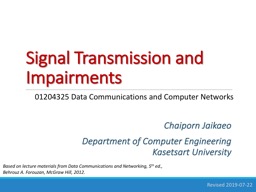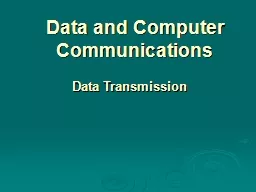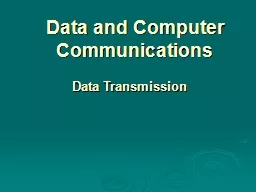PPT-Signal Transmission and Impairments
Author : wang | Published Date : 2023-09-20
Chaiporn Jaikaeo Department of Computer Engineering Kasetsart University 01204325 Data Communications and Computer Networks Based on lecture materials from Data
Presentation Embed Code
Download Presentation
Download Presentation The PPT/PDF document "Signal Transmission and Impairments" is the property of its rightful owner. Permission is granted to download and print the materials on this website for personal, non-commercial use only, and to display it on your personal computer provided you do not modify the materials and that you retain all copyright notices contained in the materials. By downloading content from our website, you accept the terms of this agreement.
Signal Transmission and Impairments: Transcript
Download Rules Of Document
"Signal Transmission and Impairments"The content belongs to its owner. You may download and print it for personal use, without modification, and keep all copyright notices. By downloading, you agree to these terms.
Related Documents














